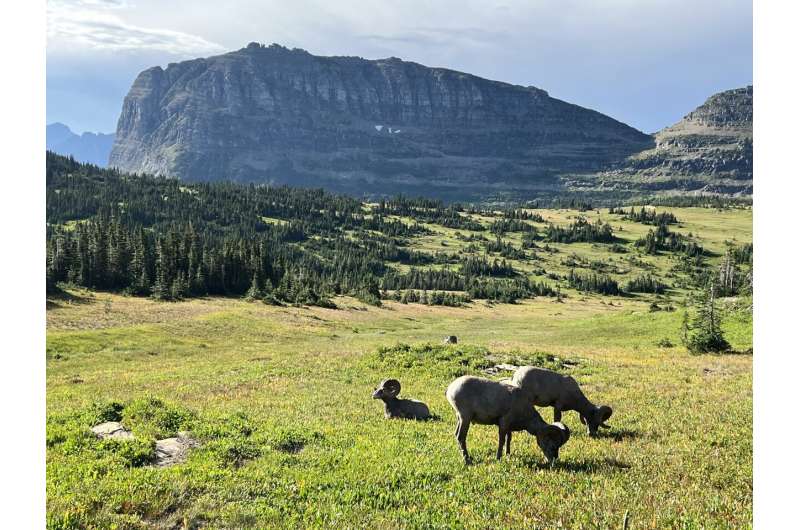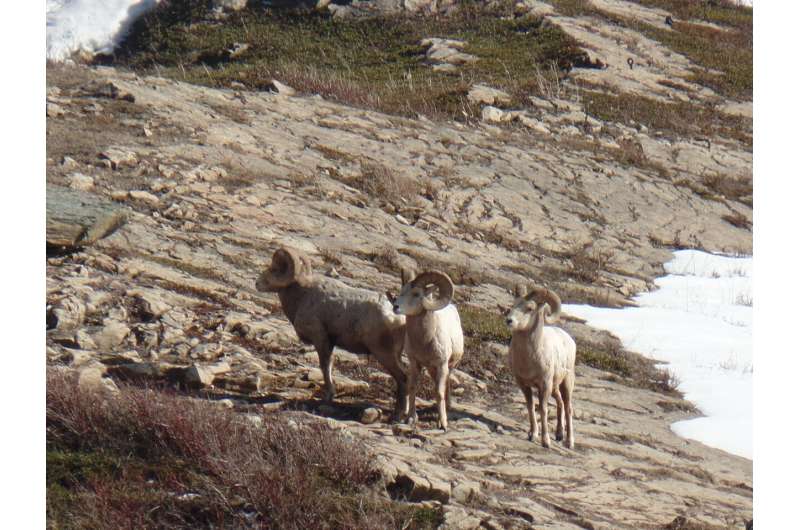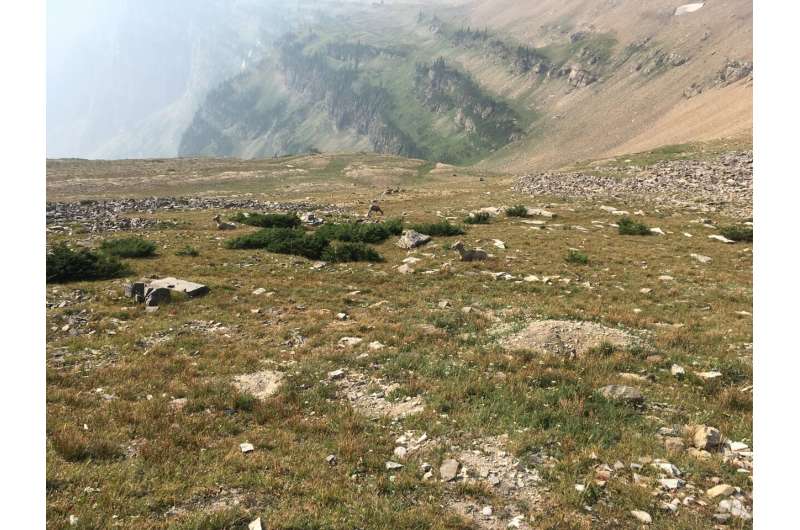This article has been reviewed according to Science X's editorial process and policies. Editors have highlighted the following attributes while ensuring the content's credibility:
fact-checked
peer-reviewed publication
trusted source
proofread
Understanding the role of sociality and implications for disease transmission among bighorn sheep populations

Sociality plays a pivotal role in the lives of many animal species, influencing mating success, survival rates, and susceptibility to diseases. In the challenging environment of bighorn sheep populations, sociality is believed to have evolved for its fitness benefits. However, the delicate balance of costs and benefits associated with sociality can vary at different scales, leading to diverse interpretations of animal behavior.
New research, titled "Bighorn sheep associations: understanding tradeoffs of sociality and implications for disease transmission," has been published in PeerJ Life & Environment. The study, conducted by the U.S. Geological Survey and National Park Service and led by Marie Tosa, now with Oregon State University, explores the intricate relationship between social behavior, disease transmission, and survival rates among bighorn sheep (Ovis canadensis).
The research focused on understanding the factors influencing direct contact rates among bighorn sheep in the vicinity of the Waterton-Glacier International Peace Park. The study incorporated both intrinsic factors, such as relatedness and age, and extrinsic factors like land cover type and season. During the period of 2002 to 2012, male and female bighorn sheep were equipped with GPS collars to monitor their movements and interactions.
Through the analysis of direct contact networks, the researchers identified significant barriers in the bighorn sheep population, which corresponded with prior disease exposure metrics. Interestingly, more direct contacts were observed between same-sex dyads compared to female-male dyads. Additionally, bighorn groups with overlapping summer home ranges were found to have higher direct contact rates.

The study revealed that direct contacts were most prevalent during the winter-spring season, coinciding with the period when bighorn sheep traveled at low speeds and an adequate number of individuals were collared in the area. Moreover, the probabilities of association were higher in regions with greater predation risk, highlighting the influence of survival-related variables on contact probabilities.
Crucially, the research established a clear link between habitat quality and direct contact probabilities. Factors such as terrain ruggedness, distance to escape terrain, and canopy cover were identified as key drivers of differences in contact probabilities among different bighorn sheep dyads.
Tosa emphasizes the importance of contact analysis in understanding the fitness tradeoffs of sociality and the potential for disease transmission among bighorn sheep populations. The findings provide valuable insights into the delicate balance of social behavior and disease dynamics in challenging environments.

The research not only advances our understanding of bighorn sheep associations but also contributes to broader discussions about the role of sociality in the dynamics of wildlife populations. It highlights the intricate web of interactions among animals and their environment and underscores the relevance of conservation efforts in safeguarding wildlife populations and mitigating disease risks.
More information: Bighorn sheep associations: understanding tradeoffs of sociality and implications for disease transmission, PeerJ (2023). DOI: 10.7717/peerj.15625
Journal information: PeerJ
Provided by PeerJ


















